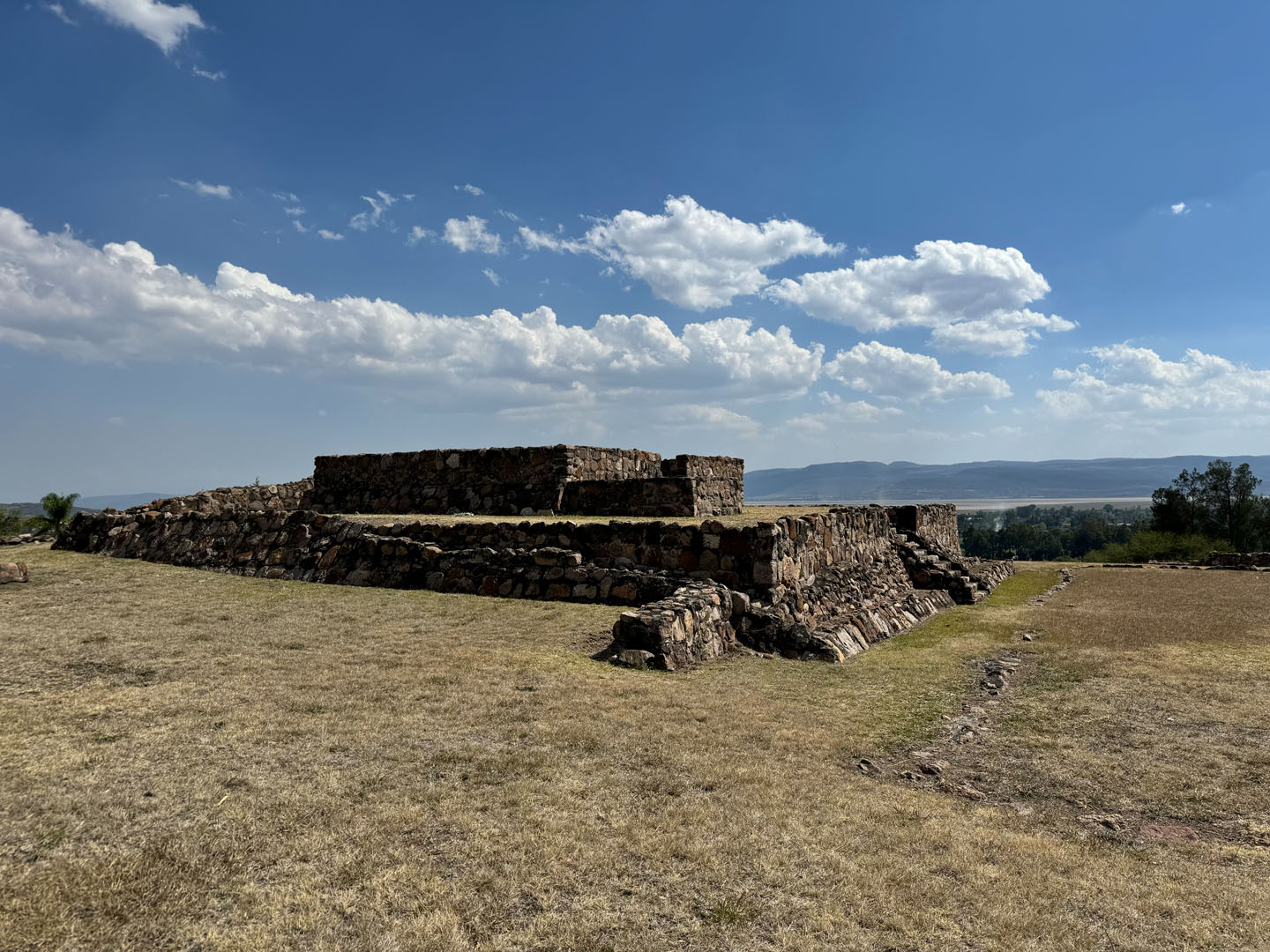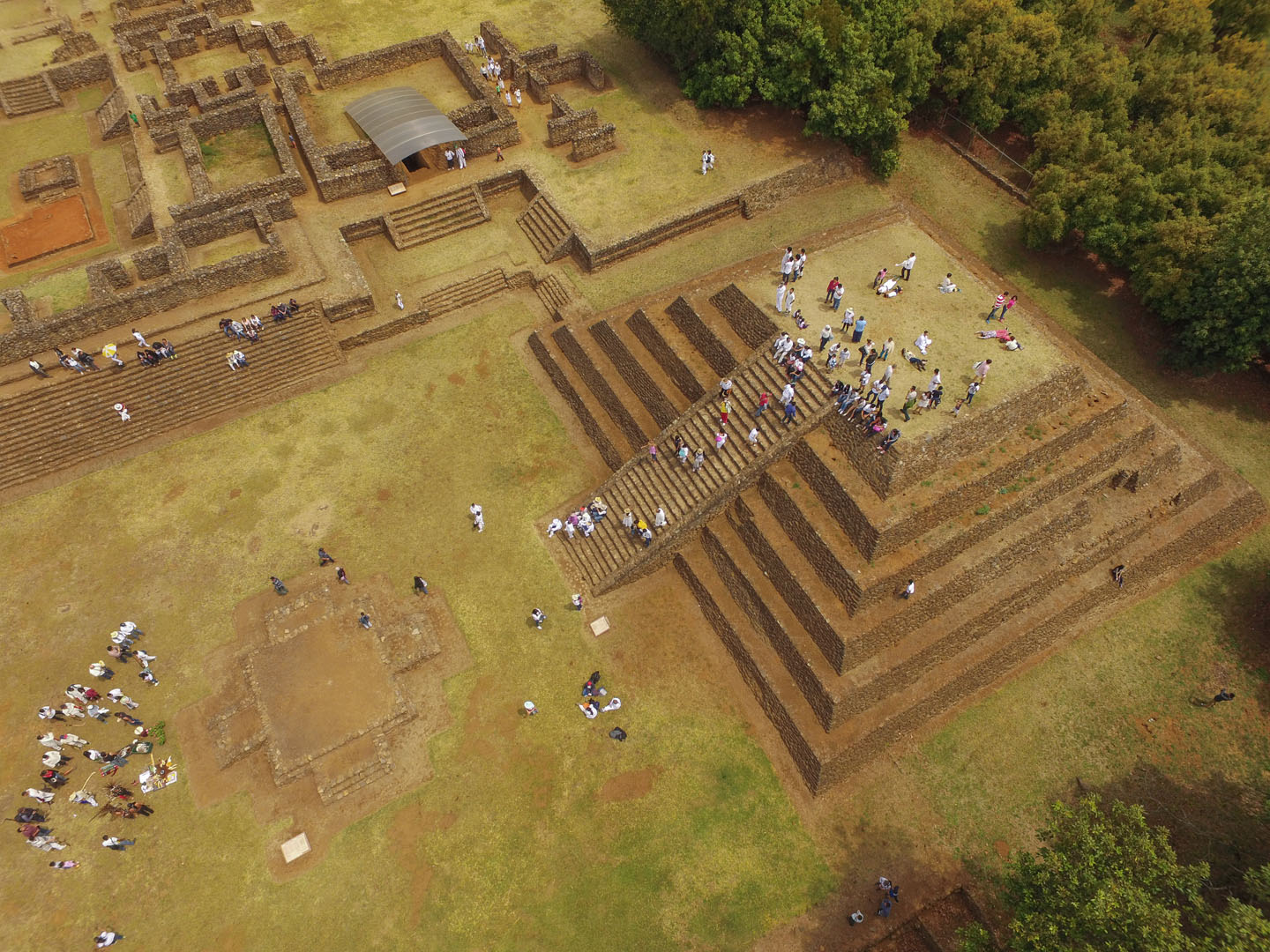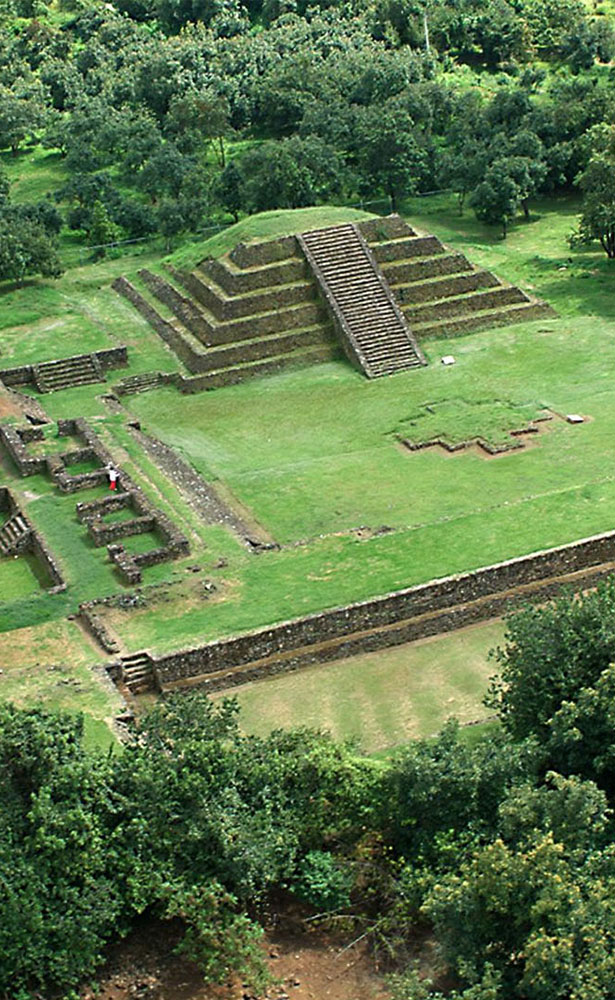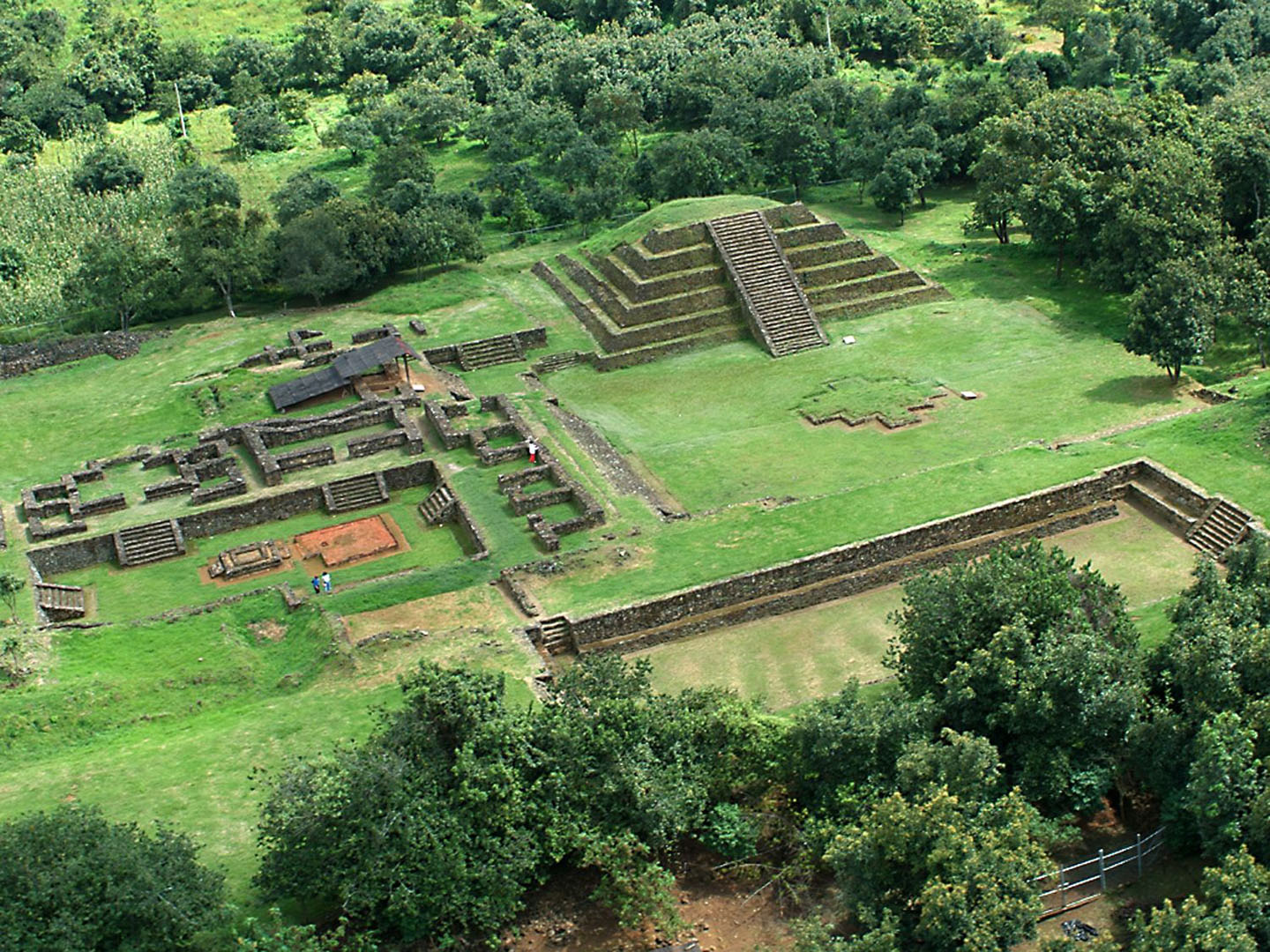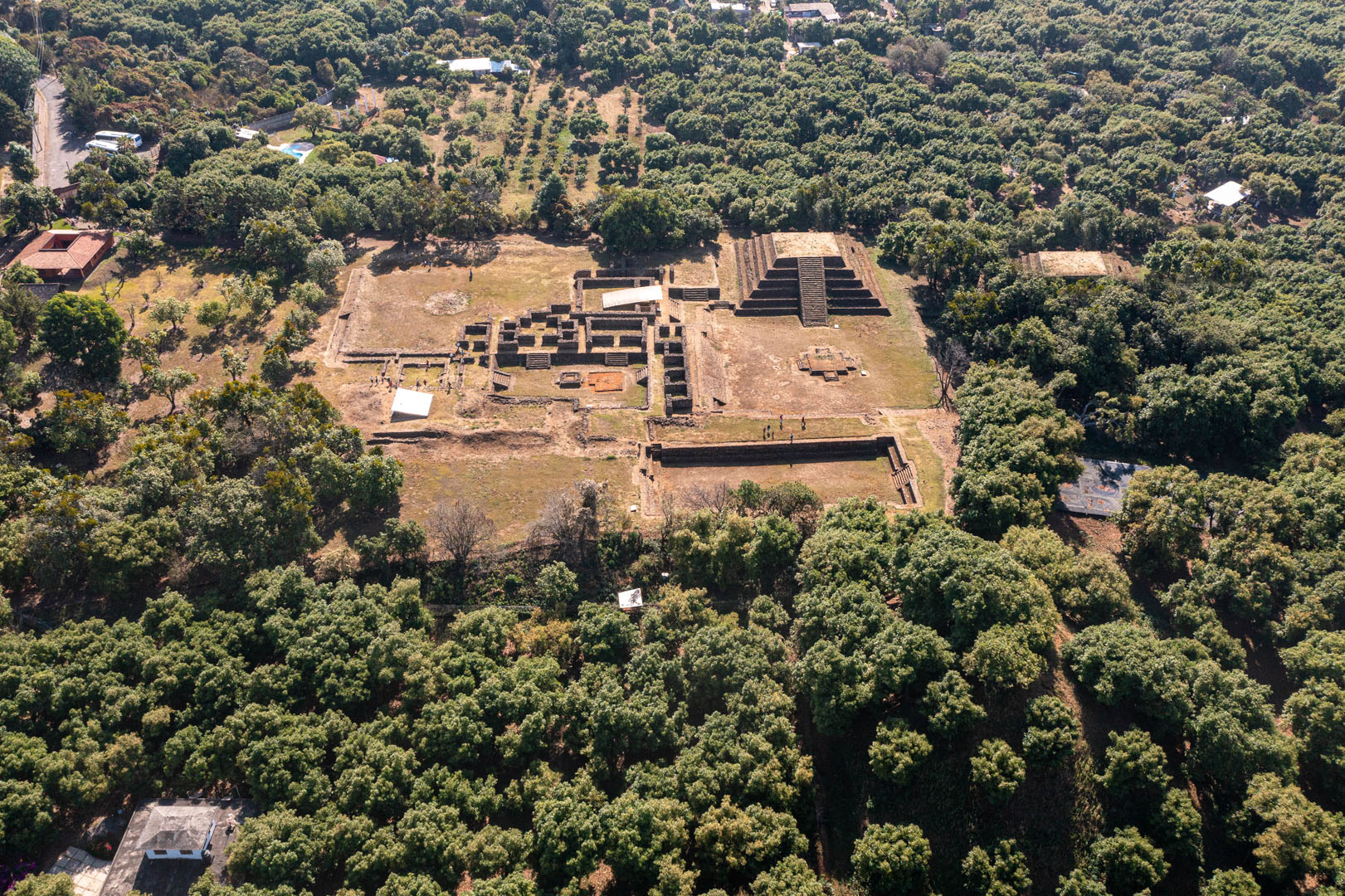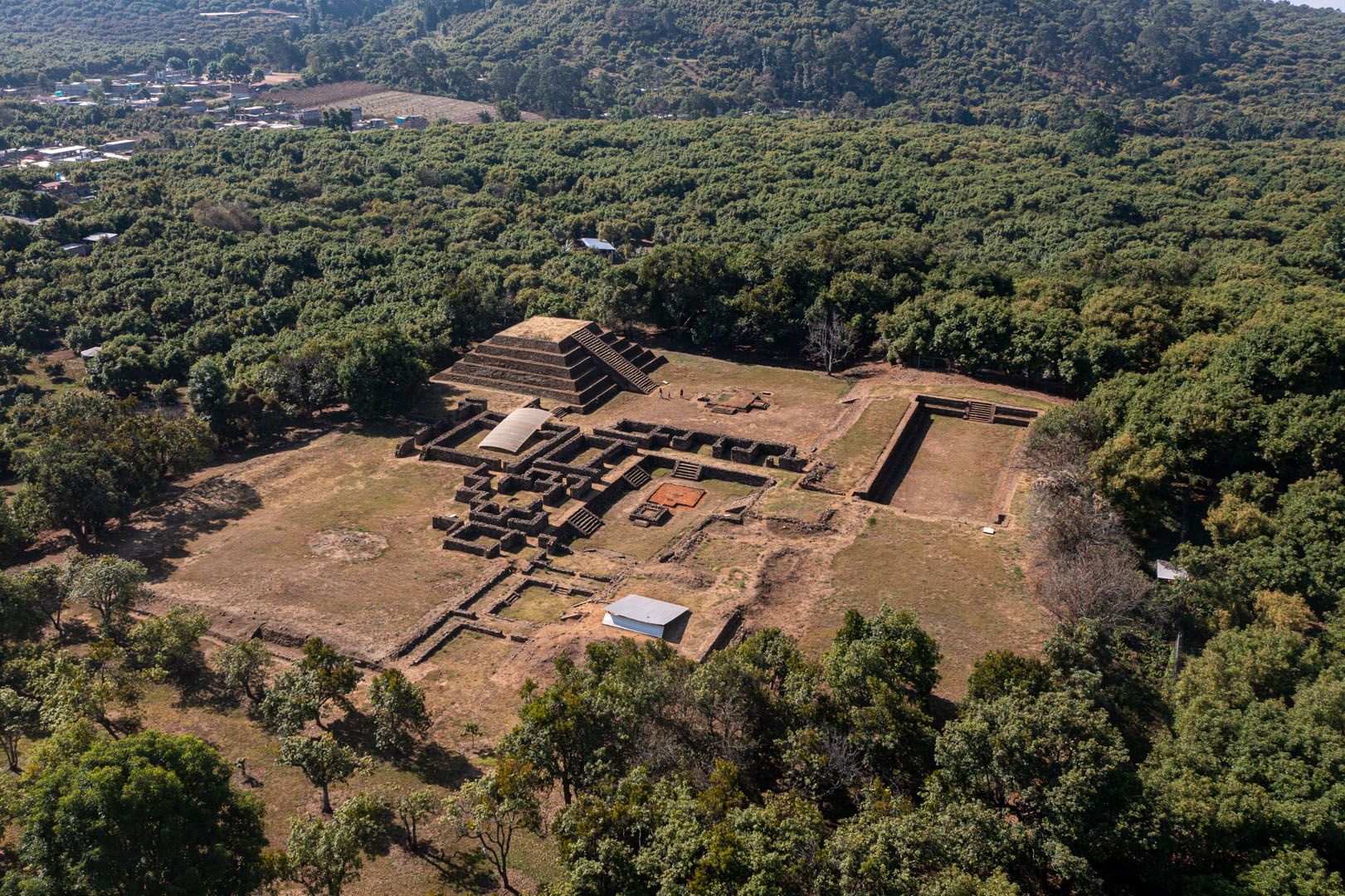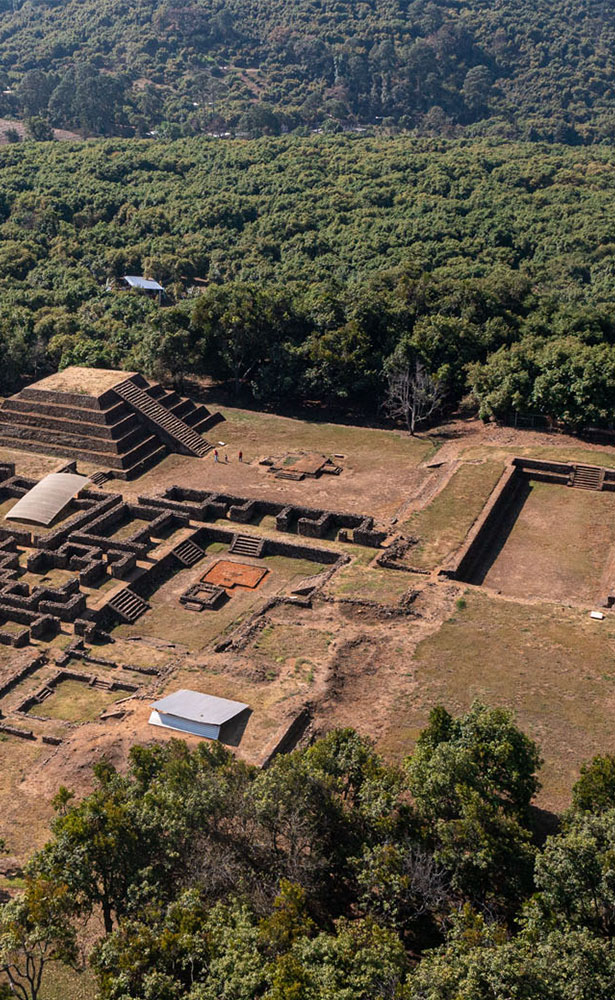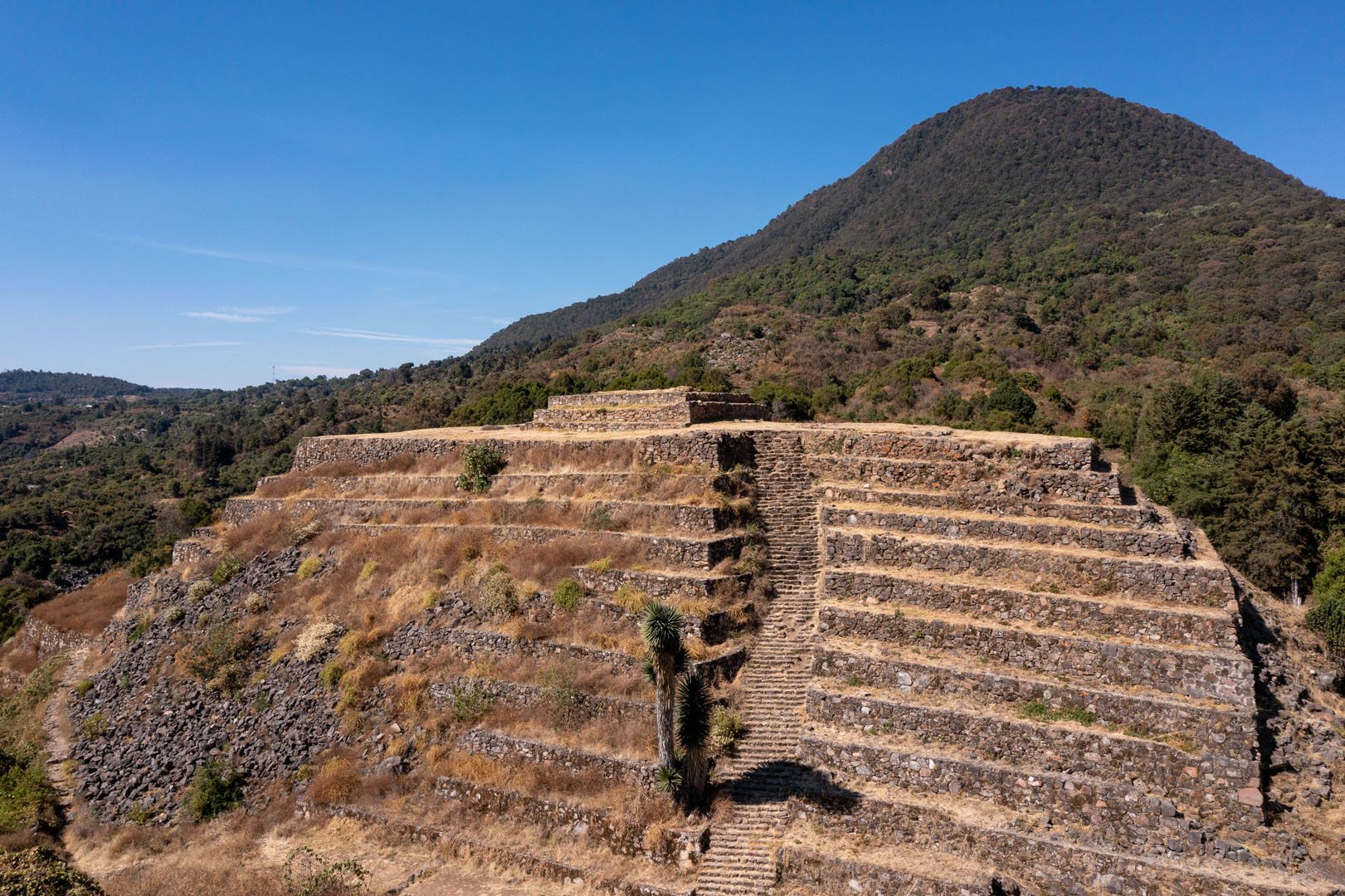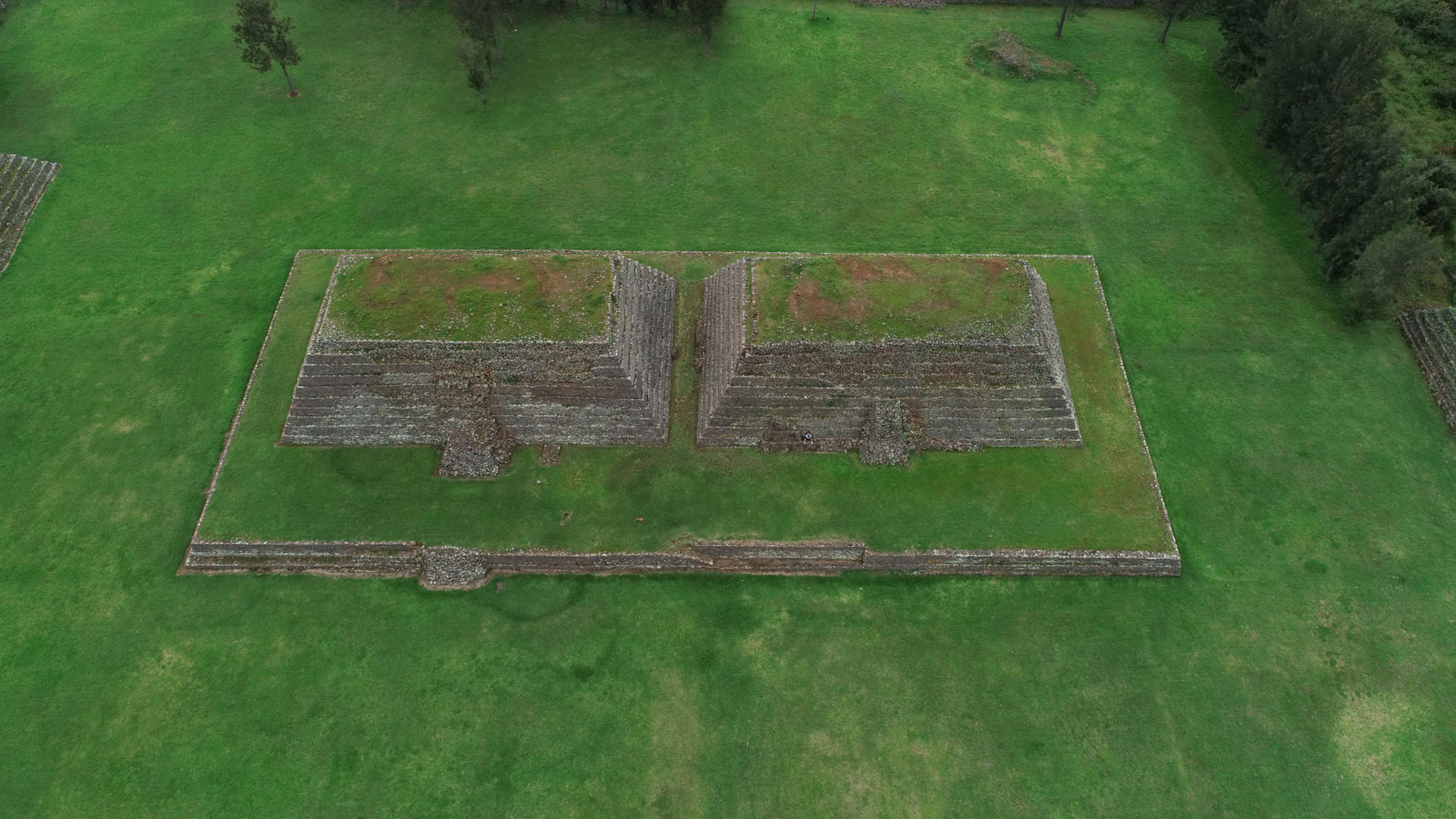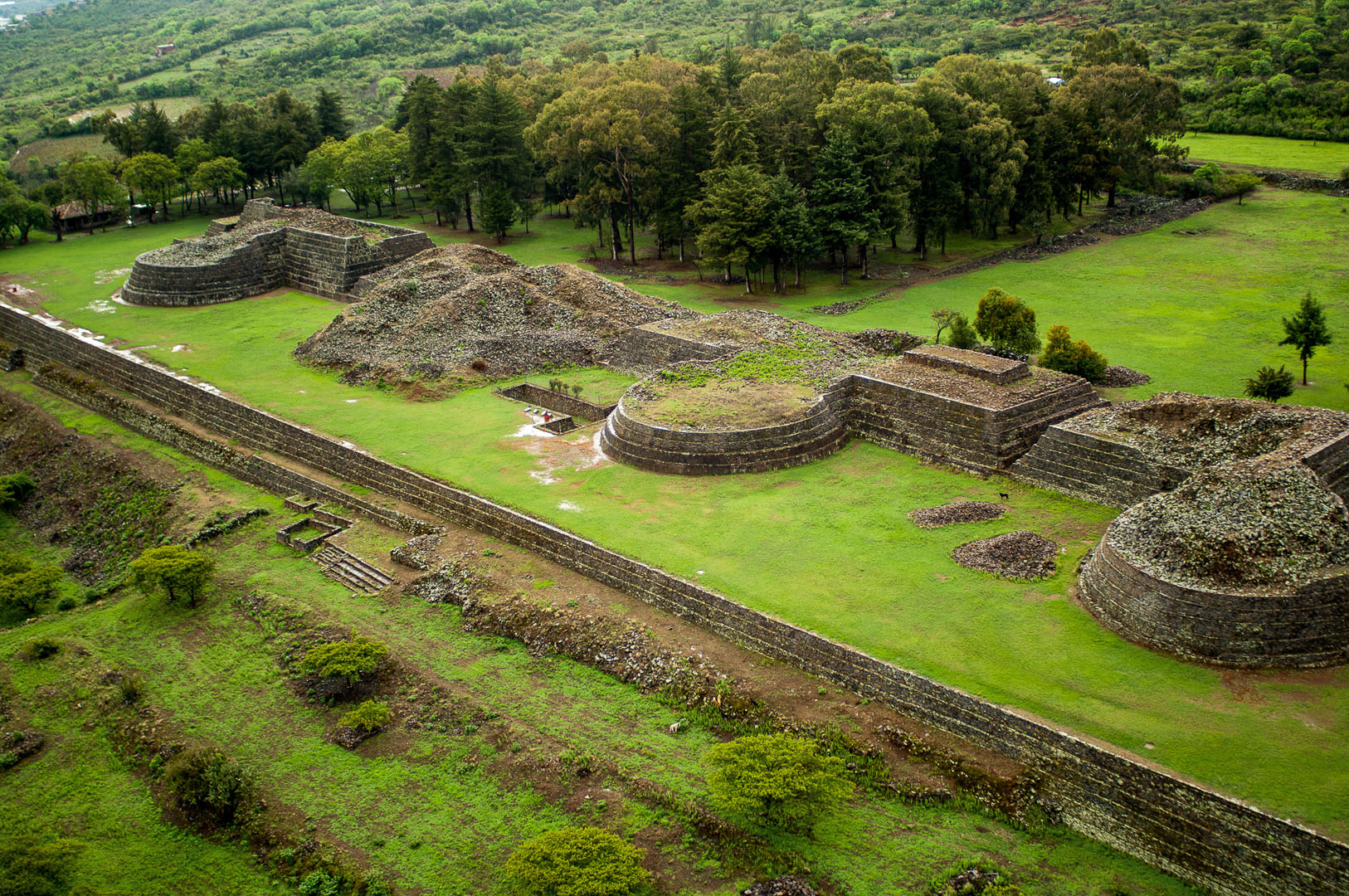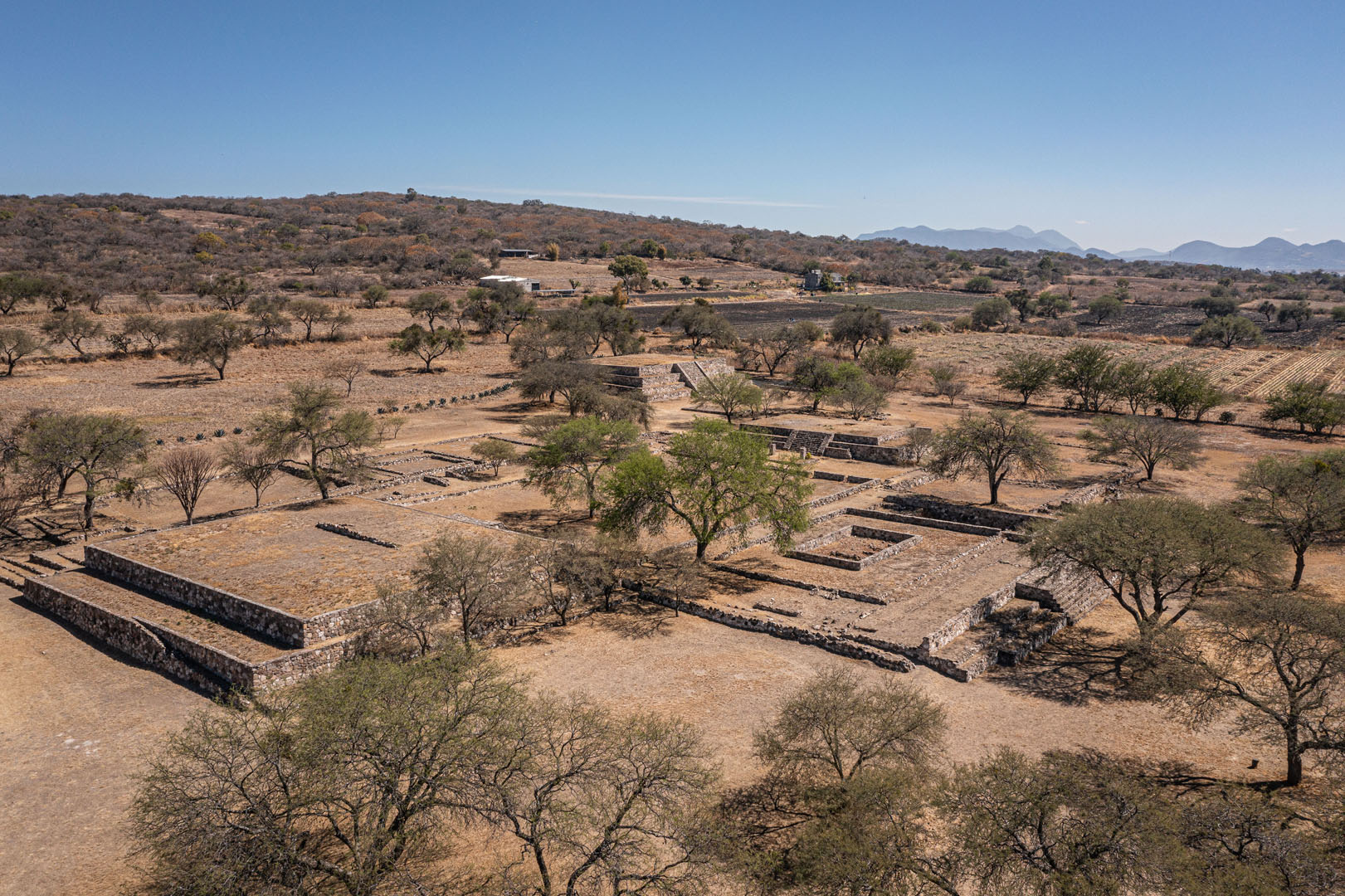Tingambato
Discover
Also known as Tinganio, which in the Purépecha language means “place where the fire begins”, this archaeological site is one of the most representative examples of the stage prior to the apogee of the Tarascan lordship. Its structures combine Teotihuacan influences with local traditions, revealing the cultural complexity of the region before the Purépecha consolidation. Despite its relevance, historical references about Tingambato were scarce until the middle of the 20th century, when archaeologists Román Piña Chan and Kuniaki Ohi carried out excavations between 1978 and 1979, revealing a large part of the ceremonial and residential area. These investigations made it possible to reconstruct a little known period of Michoacán’s history: a time of transition after the fall of Teotihuacán and before the foundation of the great Purépecha cities.
For more information about this archaeological site, click here.
Two Distinct Stages in Tingambato
The occupation of Tingambato is divided into two clearly defined stages. The first, dating from approximately 450, marks the beginning of the settlement. During this period, the local economy was based on agriculture, complemented by hunting and fishing. Builders created artificial platforms to build temples and civil structures for the elite, while huts for the people were located in the surrounding areas.
The second stage, between 600 and 900, shows an evident Teotihuacan influence. In this period, the architecture of the site adopted elements characteristic of the great metropolis such as the talud-tablero and sunken plazas, aligning Tingambato with other contemporary centers such as Tula and Xochicalco. This similarity reinforces the theory that Tingambato flourished after the fall of Teotihuacán.
Teotihuacan Heritage and Funerary Architecture
The impact of Teotihuacan culture in Mesoamerica is undeniable. Its peak between 100 and 575 turned Teotihuacan into a center of cultural, artistic and architectural power. After its collapse, many of its inhabitants migrated, taking with them their knowledge and traditions, which are reflected in sites such as Tingambato. The layout of the structures around sunken plazas and the presence of a ball game similar to that of Tula and Xochicalco are proof of this connection.
Did you know that…?
The findings have been so astonishing that since 1842, a newspaper in Michoacán published about the objects that were found. It is one of the few sites in Michoacán where a ball game with its marker ring has been found.
The End of Tingambato
Tingambato was abandoned around the year 900, leaving no trace of a transition to the later phases of the Tarascan lordship. Evidence suggests that at the end of its occupation, the site suffered a great fire, the vestiges of which have been found in archaeological excavations. This abandonment marks the closing of a cycle in Mesoamerican history, leaving Tingambato as a testimony of the cultural evolution of Michoacán.
Visiting Tingambato is an opportunity to explore a fascinating and little-known chapter of pre-Hispanic history, where the influence of great civilizations blends with regional identity, creating a unique archaeological site.
